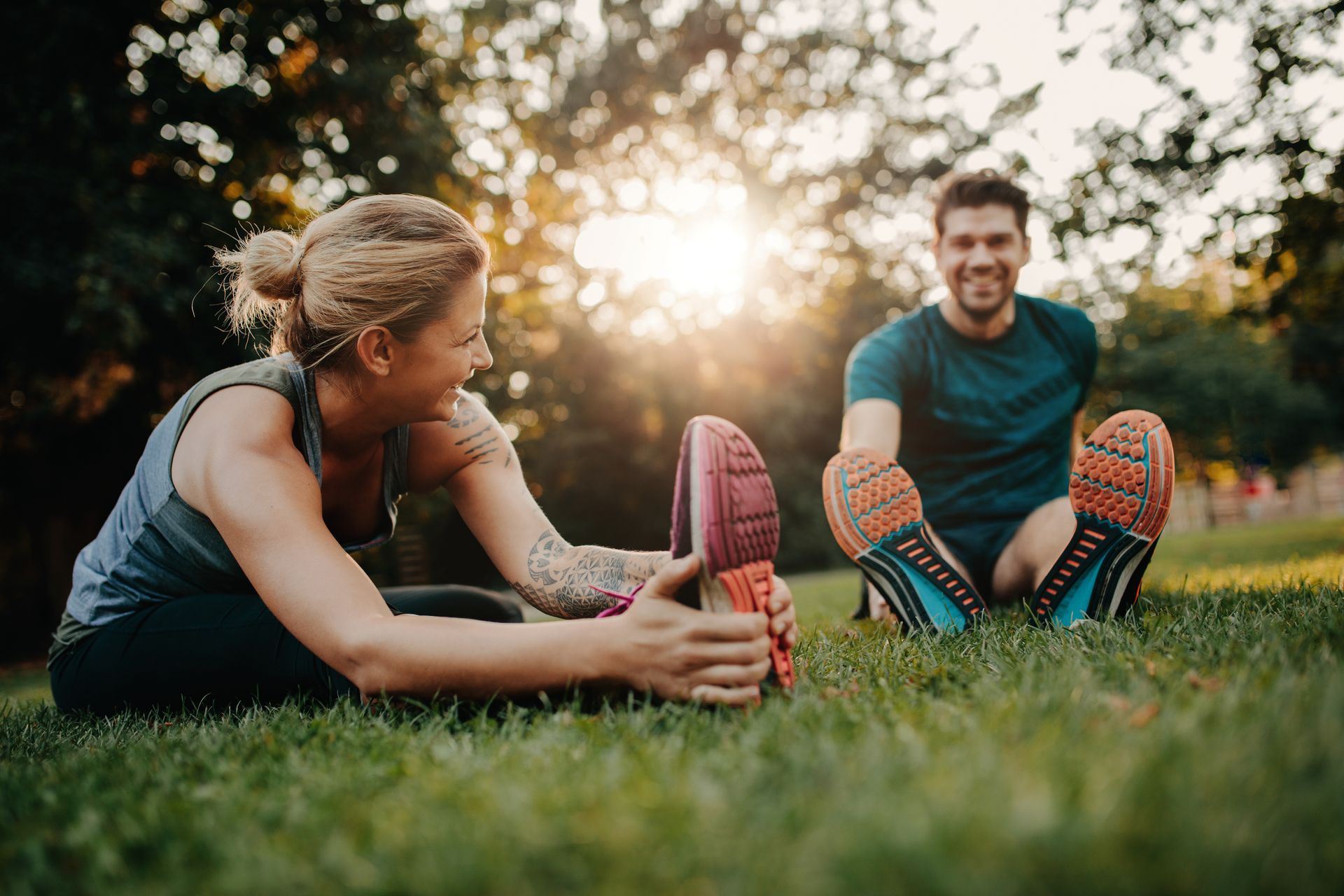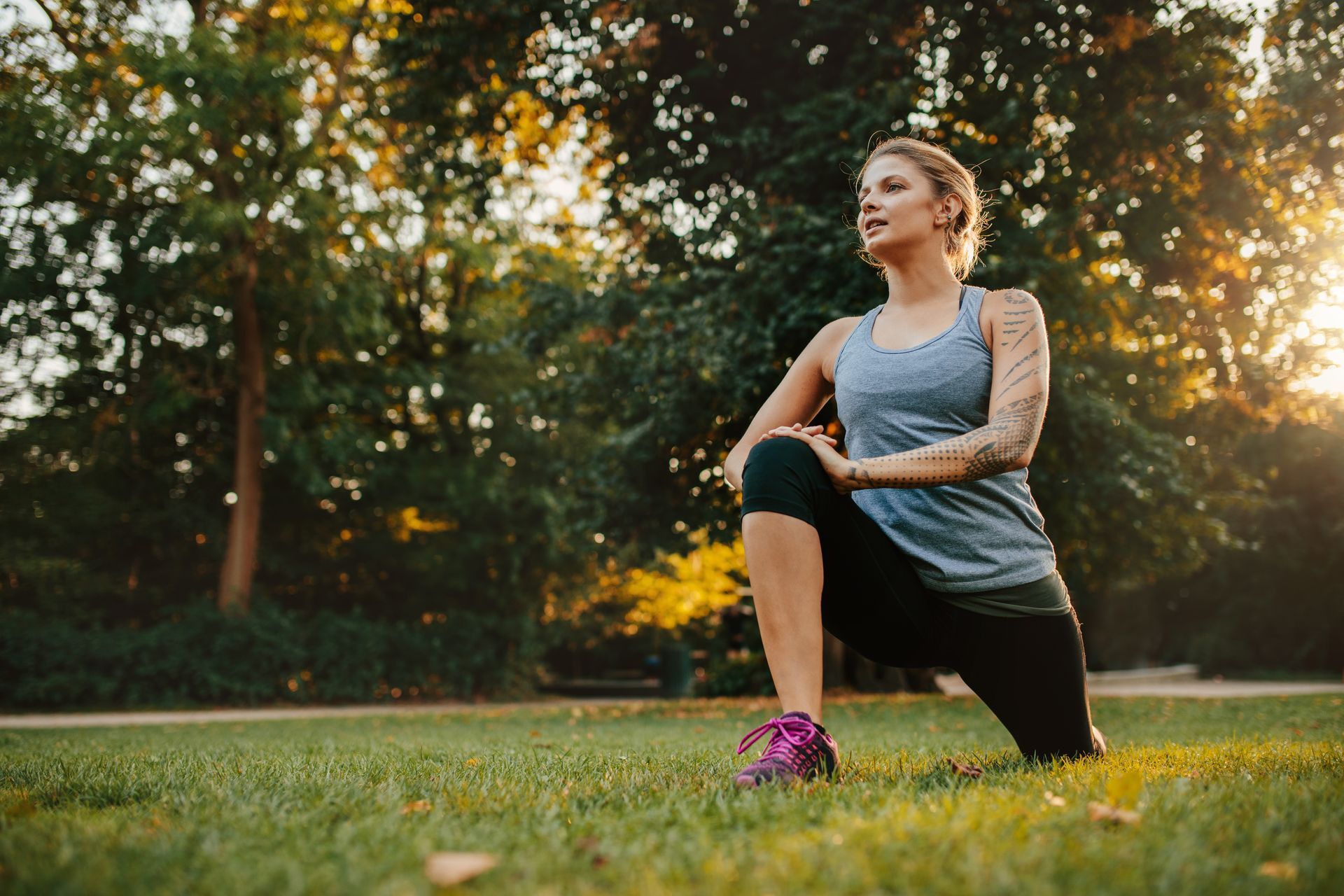The Best Stretches to Add to Your Pre and Post Workout Routines

This article provides an insightful guide into the importance of incorporating stretching exercises into daily workout routines. Focusing on pre- and post-workout stretches, it explores the benefits for overall well-being, mobility, and performance.
The piece offers a detailed analysis of dynamic and static stretches, emphasizing their role in injury prevention and recovery. Additionally, it highlights when professional assistance is necessary, including virtual therapy options, making it a comprehensive resource for optimizing your fitness regime.
Understanding the Importance of Stretching
In appreciating the significance of incorporating stretching into your daily regimen, it is crucial to understand the six key benefits it offers:
- Improved posture: Stretching helps to lengthen tight muscles and improve alignment, leading to better posture.
- Increased energy levels: Stretching increases blood flow and oxygen to the muscles, helping to boost energy levels.
- Tension release: Stretching can help to release tension and relieve muscle tightness, promoting relaxation.
- Enhanced mobility and independence: Regular stretching improves flexibility, allowing for greater range of motion and increased independence in daily activities.
- Injury prevention: Stretching increases muscle and tendon flexibility, reducing the risk of injuries during physical activities.
- Better muscle coordination and balance: Stretching helps to improve muscle coordination and balance, leading to better overall physical performance.
The importance of flexibility training cannot be overstated; it is a vital component in maintaining a healthy and active lifestyle. By improving the range of motion, stretching aids in executing movements more freely and efficiently.
Furthermore, the role of stretching in injury prevention is paramount. Regular and proper stretching increases the flexibility of muscles and tendons, reducing the risk of injuries during physical activities. This is particularly essential for athletes and individuals engaged in rigorous workouts.
Therefore, integrating stretching exercises is a practical approach to promote overall physical well-being.
Benefits of Pre- and Post-Workout Stretches
Regularly incorporating both pre- and post-workout stretches into your exercise routine can significantly enhance your athletic performance, reduce the risk of injury, and aid in muscle recovery.
Stretching for improved flexibility is crucial as it increases your muscles' range of motion, thereby enhancing your overall athletic performance. It allows for smoother, more efficient movements during physical activities, reducing the strain on your muscles and joints.
Furthermore, stretching for injury prevention is an essential factor to consider. By improving your flexibility and muscle balance, you can significantly decrease the risk of injuries, such as muscle strains and sprains.
Post-workout stretches, on the other hand, help in the efficient removal of lactic acid, aiding in quicker muscle recovery and reducing post-exercise soreness.
Introduction to Dynamic Stretches
As we further explore the realm of stretching, it's important to understand dynamic stretches, which are crucial for warming up the body and preparing your muscles for the workout ahead. Dynamic stretches are active movements where joints and muscles go through a full range of motion. These can be functional and mimic the movement of the activity or sport you're about to perform.
Incorporating dynamic stretches into your routine offers several benefits:
- They increase body temperature, which enhances muscle elasticity and decreases injury risk
- They improve muscle performance and power
- They enhance coordination and motor skills through movement rehearsal
Dynamic stretches benefits are numerous, and adopting them in your pre-workout routine can set a solid foundation for a successful, injury-free workout.

Squats and High Knees Explained
Understanding the correct execution of squats and high knees is essential for maximizing workout benefits and preventing potential injuries.
Squats, a compound exercise, engage multiple muscle groups. They can be performed with various modifications, such as sumo squats or goblet squats to target different muscle groups or accommodate individual physical limitations.
High knees, meanwhile, are a cardiovascular exercise with several variations. They can be performed at a fast pace for a high-intensity workout or at a slower pace for beginners or those with mobility issues.
Correct form in both exercises is crucial to reap the full benefits and avoid injury. It's recommended to consult a fitness professional for personalized advice on incorporating squats modifications and high knees variations into your routine.
Leg Swings and Lunges Techniques
In the realm of dynamic stretches, mastering the correct techniques for leg swings and lunges is crucial to enhance flexibility and prepare your body for a rigorous workout. Leg swings are effective at promoting lower body flexibility and range of motion improvement. Start by standing upright, holding onto a support. Swing one leg forward and backward in a controlled manner, gradually increasing the height of the swing.
Lunges, on the other hand, target the hip, knee, and ankle joints. Start in a standing position, take a step forward and lower your body, keeping your front knee above your ankle.
Both exercises are essential for:
- Enhancing muscle flexibility and joint mobility
- Injury prevention through muscle warming and strengthening
- Improving balance and coordination, critical for complex movements in workouts.
Mastering Plank Walk-outs and Arm Circles

Regularly incorporating Plank Walk-outs and Arm Circles into your pre-workout routine can significantly enhance core strength and shoulder flexibility.
Mastering plank walk outs and arm circles involves understanding the correct technique and variations. For plank walk outs, start in a standing position, hinge at the hips, walk your hands forward into a plank position, hold, and then walk your hands back. Advanced variations involve adding a push-up or leg lift at the plank position.
Arm circles involve standing tall, extending arms to the side, and making small to large circular motions. To increase difficulty, try holding weights.
Improving core strength through plank walk outs and arm circles is achievable, and incorporating these movements into a full body workout routine can yield significant fitness gains.
The Art of Post-Workout Stretching
Building upon the five dynamic warm-up exercises previously detailed, mastering the art of post-workout stretching encompasses another set of five essential static stretches that help cool down the body, enhance muscle recovery, and improve flexibility after a strenuous workout.
Post-workout stretching techniques involve slower, held stretches that target muscle groups used during the workout. Here are three post-workout stretches to include in your routine:
- Hamstring stretch: Extend one leg and reach towards your foot.
- Shoulder stretch: Draw one arm across your body and hold it with the other arm.
- Quadriceps stretch: Stand on one leg and pull the other foot towards your glutes.
Learning how to incorporate stretching into your fitness routine post-workout helps increase flexibility, improve muscle recovery, and reduce potential for injury.
Exploring Different Static Stretches
While dynamic stretches prepare your body for a workout, understanding and incorporating various static stretches is vital for recovery and flexibility after you have completed your exercise routine.
Static stretches involve holding a stretch for a prolonged period, enhancing muscle elasticity and joint flexibility. A notable benefit of static stretches, compared to dynamic stretches, is its focus on relaxation and recovery, promoting muscle healing and reducing post-workout stiffness.
A common static stretch is the shoulder stretch. To perform this, stand upright, bring your right arm across the body at shoulder height, and use your left arm to apply gentle pressure on the right arm, deepening the stretch. Hold for 20-30 seconds before switching arms.
Incorporating this simple routine can significantly improve shoulder flexibility and reduce strain.
Importance of Seeking Professional Help
Engaging with a qualified physical therapist is an essential step for individuals seeking to optimize their stretching routine and address any persistent discomfort or pain. Despite the numerous benefits of a regular stretching routine, there are instances where professional guidance becomes crucial.
Professional physical therapists possess the knowledge and skills to:
- Identify and correct improper stretching techniques that can lead to injury
- Design personalized stretching and exercise programs tailored to individual needs and fitness levels
- Provide targeted treatments for specific muscle groups and joints to alleviate pain and discomfort
The benefits of professional guidance extend beyond mere instruction on proper stretching. When to seek physical therapy assistance? The answer is simple: whenever you experience chronic pain, sustained injuries, or simply want to enhance your performance and prevent future injuries.

Exploring Virtual Therapy Options
In the digital age, virtual therapy options are emerging as a convenient solution for individuals seeking professional guidance for their stretching routines.
The benefits of virtual therapy extend beyond convenience; it also allows access to expert advice, personalized plans, and real-time feedback to ensure correct form and technique, reducing the risk of injury.
Moreover, virtual therapy sessions can be recorded, allowing individuals to revisit them for reinforcement and precision.
To incorporate virtual therapy into your fitness routine, begin by researching reputable platforms and certified professionals.
Next, schedule consistent sessions to maintain regularity.
Ensure your environment is suitable for performing stretches and that your device is positioned for clear visibility.
The Bottom Line
Through this comprehensive guide, it is clear that incorporating dynamic and static stretches before and after workouts significantly enhances overall well-being, mobility, muscle coordination, and physical performance.
Efficacious use of these practices can aid in injury prevention and recovery. It also highlights the necessity of professional guidance, when required, and the accessibility of virtual therapy options.
Thus, the adoption of effective stretching techniques is essential for optimizing workout routines and achieving health goals in 2023.


